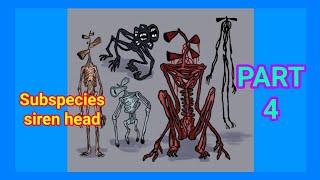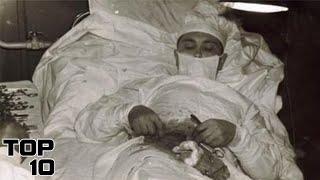Head Transplants
Description
CHECK OUT
[Bony Right] What Is A Virus - https://youtu.be/bNY71vmeSs4
DESCRIPTION
In 1894, the assassination of the French President Marie Francois Sadi Carnot by an Italian Anarchist triggered a chain of events that would lead to some of the most remarkable breakthroughs in surgical medicine of the 20th century. Carnot ultimately succumbed to his knife wound due to the severing of his portal vein. At the time surgeons had no technique that could successfully reconnect blood vessels. This left a lasting impression on a young french surgeon named Alexis Carrel, who would ultimately go on to develop new techniques for suturing blood vessels.Interest in head transplantation started early on in modern surgery though it would take Alexis Carrel’s breakthrough in the joining of blood vessels or vascular anastomosis to make the procedure feasible.
In 1908, Carrel and American physiologist, Dr. Charles Guthrie, performed the first attempts at head transplantation with two dogs. They attached one dog’s head onto another dog’s neck, connecting arteries in such a way that blood flowed first to the decapitated head and then to the recipient’s head. The decapitated head was without blood flow for about 20 min during the procedure, and while the transplanted head demonstrated aural, visual, and cutaneous reflex movements early after the procedure, its condition soon deteriorated and it was euthanized after a few hours.
Throughout the 1950s and 60s advances in immunosuppressive drugs and organ transplantation techniques offered new tools and methods to overcome some of the challenges faced by previous head transplantation attempts. In 1965, Robert White, an American neurosurgeon, began his own controversial research. However, unlike Guthrie and Demikhov who focused on head transplantation, White’s goal was to perform a transplant of an isolated brain.In order to accomplish this challenging feat, he developed new perfusion techniques which maintained blood flow to an isolated brain. White created vascular loops to preserve the blood vessels and blood flow between the internal jaw area and the internal carotid arteries of the donor dog. This arrangement was referred to as "auto-perfusion" in that it allowed for the brain to be perfused by its own carotid system even after being severed at the second cervical vertebral body. Deep hypothermia was then induced on the isolated brain to reduce its function, and it was then positioned between the jugular vein and carotid artery of the recipient dog and grafted to the cervical vasculature.
It would not be until 45 years later for the next major breakthrough in head transplantation to occur. In 2015, using mice, the Chinese surgeon Xio-Ping Ren would improve upon the methods used by Robert White by utilizing a technique in which only one carotid artery and the opposite jugular vein were cut, allowing the remaining intact carotid artery and jugular vein to continuously perfused the donor head throughout the procedure.
To date, all attempts at head transplantation have been primarily limited to connecting blood vessels. However, the recent development of "fusogens" and their use in the field of spinal anastomosis or the joining of spinal nerves, has opened up a potential solution to fusing the nervous systems of the donor and the recipient during transplantation.Around the same time as Ren’s research, Italian neurosurgeon
Sergio Canavero also put forth his own head transplantation protocol that not only addressed reconnecting a spinal cord but was specifically designed for human head transplantation.Canavero’s protocol is based on acute, tightly controlled spinal cord transection, unlike what occurs during traumatic spinal cord injury or simply surgically severing it. He postulates that a controlled transection will allow for tissue integrity to be maintained and subsequent recovery and fusion to occur. His proposed technique claims to exploit a secondary pathway in the brain known as the "corticotruncoreticulo propriospinal" pathway. This gray-matter system of intrinsic fibers forms a network of connections between spinal cord segments. When the primary, corticospinal tract is injured, the severed corticospinal tract axons can form new connections via these propriospinal neurons.
One of the most overlooked issues by head transplant researchers is that of pain.
In 2015, Valery Spiridonov, a 33-year-old Russian computer scientist who suffers from a muscle-wasting disease, became the first volunteer for HEAVEN, or the "head anastomosis project" led by Canavero, becoming the first man to sign up for a head transplant. However, soon after the announcement, he withdrew from the experiment.
SUPPORT NEW MIND ON PATREON
https://www.patreon.com/newmind
SOCIAL MEDIA LINKS
Instagram - https://www.instagram.com/newmindchannel





















Comments